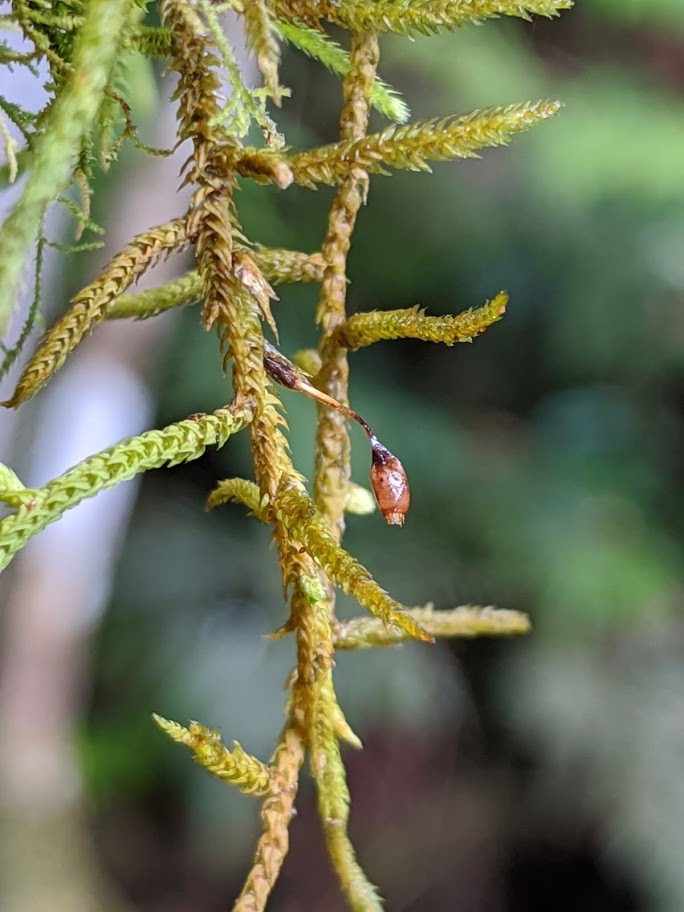Papillaria crocea
(Hampe) A.JaegerAsexual reproduction rarely by attenuate branch tip with caducous leaves. Plants yellow-brownish to dark green, not glossy. Pendent stems to 10 cm long, distantly and irregularly branched; branches to 2 cm long, attenuate. Stem leaves erect-spreading when moist, erect when dry, ovate-triangular to broad lanceolate, 1–1.7 (–2) mm long, 0.4–1 mm wide, irregularly plicate or with two longitudinal plications; base cordate; apices acute to acuminate; costa extending from 2/3 of leaf length to almost to apex; margins entire or denticulate on auricles, slightly undulate in auricles, with 1–3 rows of quadrate to short-rectangular less papillose or often smooth cells forming a border becoming obscure in the auricles; apical cells elliptic, (5–) 8–20 (–25) μm long, 2–4 μm wide, smooth; midlaminal cells and most laminal cells in apical half rounded-rhomboidal, oval or rhomboidal, (3–) 7–25 μm long, 2–12 μm wide, pluripapillose, papillae often obscuring cell outline; auricular cells linear-rhomboidal, to 10 μm long, 3–5 μm wide, smooth or with few papillae, the long axis c. parallel to margin close to margin; laminal cells at base near costa quadrate to rectangular, 10–37 μm long, 4–10 wide, smooth or with 1–2 papillae. Branch leaves similar to stem leaves, 1.1–1.5 mm long, 0.4–0.9 mm wide. Seta 2.8–5 mm long, smooth. Capsule ovoid, 1.3–1.6 mm long. Operculum 0.8–1.2 mm long.
VVP, VRiv, GipP, EGL, EGU, HSF, OtR, Strz, HFE. Rainforest and their margins and wet-sclerophyll forest mostly in East Gippsland east of the Mitchell River. Also Qld, NSW and ACT. Yemen, India, Sri Lanka, Malesia, New Zealand, New Caledonia through to Easter Island, Bolivia and Brazil.
 Spinning
Spinningde Oliveira, J.R.P.M.; Quandt, D.; Newton, A.E.; Pôrto, K.C.; Luong, T.-T.; Huttunen, S. (2020). Systematic Revision of Papillaria (Meteoriaceae, Bryophyta). Systematic Botany 45(3): 411–438.
Streimann, H. (1992). Moss genus Papillaria (Meteoriaceae) in the Pacific. Journal of the Hattori Botanical Laboratory 71: 83–111.

